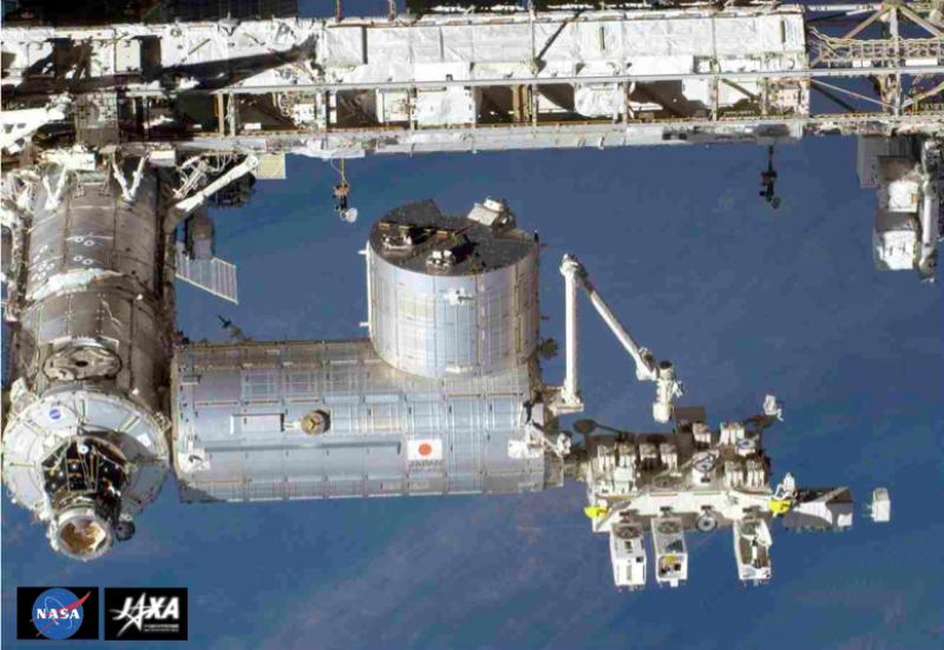
 Credit: JAXA; NASA
Credit: JAXA; NASA
Berthing CALET
The International Space Station is an extraordinary scientific laboratory offering unique capabilities for studying the effects of space travel on humans, and also to perform basic research in physics, chemistry and astronomy. Experiments on the ISS include studies of how muscles respond to microgravity, the effects of microgravity on 3-d printing, and the study of the nature of the mysterious dark matter that makes up the bulk of the material Universe. On August 24, a new experiment, the Calorimetric Electron Telescope, or CALET, was installed on the Japanese Experiment Module - Exposed Facility (JEM-EF) of the ISS, an external platform located on the ISS which can hold up to 10 individual experiements. CALET is a high energy mission designed to perform the first long-term, high resolution study of the cosmic-ray spectrum at extremely high energies. Cosmic rays are composed of electrons and other bits of atoms which are accelerated to extremely high energies by stellar explosions, stellar flares, black holes or other means. CALET was carried to the ISS by an
HTV-5 Transport Module, and attached to the JEM-EF using a robot arm, as shown in the image above.
CALET's study of the cosmic ray spectrum will help determine the nature of dark matter, identify discrete sources of high energy particle acceleration in our local region of the Galaxy, and help physicists understand how high energy cosmic rays propagate through space.
Published: September 21, 2015
<
HEA Dictionary ● Archive
● Search HEAPOW
● Other Languages
● HEAPOW on Facebook
● Download all Images
● Education ● HEAD
>

Each week the HEASARC
brings you new, exciting and beautiful images from X-ray and Gamma ray
astronomy. Check back each week and be sure to check out the HEAPOW archive!
Page Author: Dr. Michael F. Corcoran
Last modified Tuesday, 27-Feb-2024 10:13:22 EST


